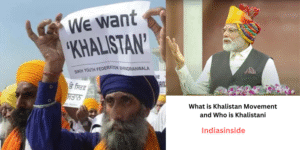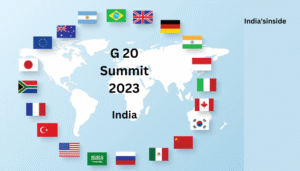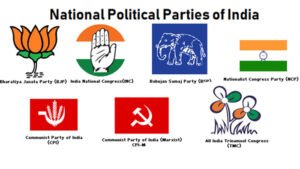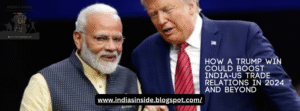What is Khalistan Movement and Who are Khalistani?
The Khalistan movement, a term that has earned consideration and...
Read MoreWhat is G20 Summit 2023? G20 member countries name
There are numerous countries in the world. Sometimes the relationship...
Read MoreIndian political parties and their symbols | Best political party in India
Indian political parties: India is a democratic country and has...
Read MoreHow a Trump Win Could Boost India-US Trade Relations in 2024 and Beyond
The US-India trade relationship has been growing steadily in recent...
Read MoreIntroduction:
Politics in India is the foundation of its democracy — the world’s largest. With over 900 million eligible voters and a diverse population representing multiple religions, languages, and ideologies, Indian politics is vibrant, complex, and ever-evolving. It shapes policies, governance, and the nation’s future, reflecting the aspirations of 1.4 billion citizens.
Historical Background:
Pre-Independence Political Movements:
India’s modern political system has its roots in the freedom struggle. The Indian National Congress (INC), formed in 1885, was at the forefront of campaigns against British rule. Leaders like Mahatma Gandhi, Jawaharlal Nehru, Subhas Chandra Bose, and B.R. Ambedkar shaped the vision of an independent and democratic India.
Constitution and Republic Formation:
On 26th January 1950, India became a republic with the adoption of its Constitution, the world’s longest written constitution. It established a parliamentary system, guaranteeing equality, freedom, and justice to all citizens.
Structure of Indian Politics:
Federal Democratic Republic:
India follows a federal structure, dividing power between the Union Government and State Governments. The President is the ceremonial head of state, while the Prime Minister leads the government.
Legislature:
-
Lok Sabha (House of the People): Members elected directly by the citizens every five years.
-
Rajya Sabha (Council of States): Members elected by state legislatures.
Executive and Judiciary:
The executive branch, headed by the Prime Minister and Council of Ministers, implements laws. The Judiciary, led by the Supreme Court, ensures laws follow the Constitution and protects citizens’ rights.
Major Political Parties:
Indian National Congress (INC):
One of the oldest parties, key in India’s freedom struggle, and has led the country for decades post-independence.
Bharatiya Janata Party (BJP):
A right-of-centre party is currently leading the central government. Known for policies promoting nationalism, economic reforms, and technology-driven governance.
Regional Parties:
India’s political landscape is rich with regional parties like AAP, TMC, DMK, AIADMK, Shiv Sena, SP, BSP, and others that play crucial roles in state politics and coalition governments.
Electoral Process:
Universal Adult Franchise:
Every citizen above 18 years has the right to vote, making Indian elections one of the largest democratic exercises in the world.
Election Commission of India:
The Election Commission ensures free and fair elections through EVMs (Electronic Voting Machines) and strict monitoring of campaigns.
General and State Elections:
-
General Elections: Held every five years for Lok Sabha.
-
Assembly Elections: Held in states for forming local governments.
Key Political Milestones:
-
Green Revolution (1960s): Transforming India into a food-surplus nation.
-
Emergency (1975–77): Suspension of civil liberties, one of the most controversial periods in Indian politics.
-
Economic Liberalization (1991): Opening India to global markets.
-
Recent Reforms: GST rollout, Digital India, and direct benefit transfers.
Challenges in Indian Politics:
-
Corruption and Black Money: A persistent issue despite reforms.
-
Criminalization of Politics: Many elected representatives face criminal cases.
-
Caste and Religion-based Politics: Often used to mobilize vote banks.
-
Coalition Governments: Can sometimes lead to instability.
The Future of Indian Politics:
Youth Participation:
India has a young population, and their participation in politics is increasing through activism, voting, and entrepreneurship.
Technology in Governance:
Digital governance initiatives like Aadhaar, UPI, and e-Governance platforms have made services more transparent and efficient.
Global Role:
India’s diplomacy and participation in G20, BRICS, and UN missions highlight its growing political influence globally.
Conclusion:
Politics in India is both a challenge and an opportunity — a reflection of its diversity, complexity, and democratic spirit. From its struggle for freedom to its growing global stature, Indian politics has been a story of resilience, transformation, and people’s power. As India moves forward, greater transparency, youth leadership, and inclusive policies will define the next phase of its political evolution.



